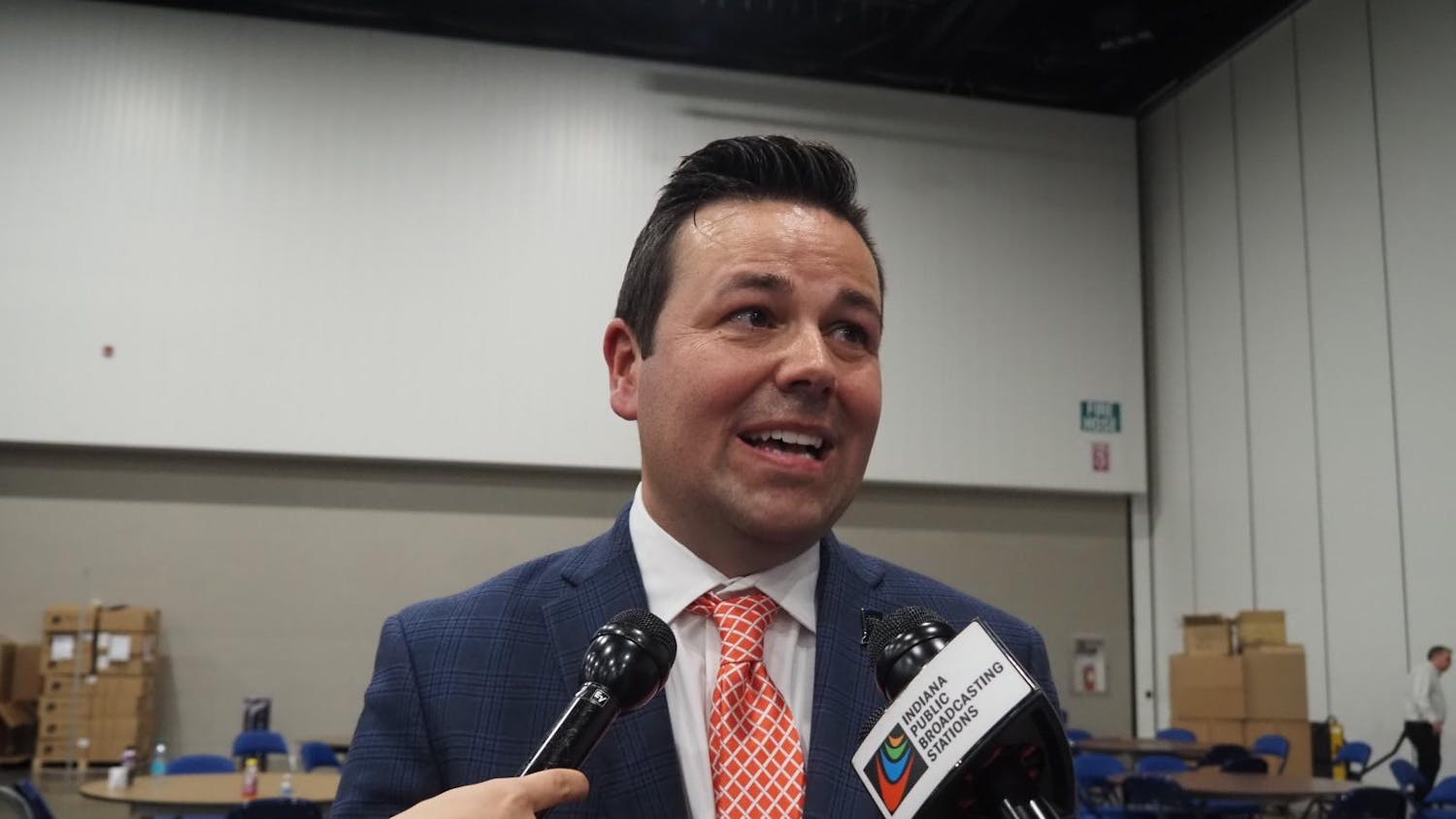Centered in a ballroom, women adorned in floral silk gowns curtsy and extend gloved hands for their suitors to delicately kiss. An evening in the Victorian era might not be as far away as it seems.
Oscar Wilde’s “An Ideal Husband,” directed by Fontaine Syer, will show this week in the Ruth N. Halls Theatre as part of the ArtsWeek celebration.
Even though the play was published in 1895, the themes still resonate with modern-day society.
“The issues that it’s dealing with are, you know, the same today – jealousy, blackmail, love, sexual indiscretions,” said Matthew Buffalo, a third-year graduate student who is playing the lead role, Lord Goring.
Additional leads include first-year graduate students Sarah Fischer as Lady Chiltern, Abby Rowold as Mrs. Cheveley, Eric Young as Lord Chiltern, and senior Justine Salata as Mabel.
A play that takes place more than 100 years ago can be difficult for some actors to emulate, but Syer brought in period expert Nira Pullen from Wayne State University to show them how to look and act like true Victorians.
“We would have to walk around the room and greet people in the way you would in 1895,” Salata said.
Designer goes behind the 'seams'
Erica Griese hunches over a table as she meticulously stitches a white faux-pearl clip-on earring to a sheer pink bow, taking care in the finishing touches.
The details come last, said Griese, IU graduate student and costume designer for “An Ideal Husband.” Before diving into the construction of the clothing, she had to do the research that goes along with a period play set during the Victorian era.
She said she looked at black-and-white historical pictures to see exactly what people of that time wore. She also looked up artists that Oscar Wilde referenced in the play to portray how he imagined the characters to look.
“You don’t always have to be historically accurate in your designs,” she said, “but it’s good to know what the rules were.”
Victorians were particular in their appearance and mannerisms, and although Griese tried to stay true to the era, sometimes she made personal choices to
coincide with the characters’ personalities.
For example, one of the female characters carries a walking stick instead of a parasol.
“Now someone may not even ask the question, ‘Why does she not have a parasol? Why does she have something that’s a bit more masculine?’” she said. “Well, that’s the whole point. She is the character in the play who is taking on a very powerful role.”
The costumes are a combination of rented, pulled and built pieces, Griese said. The process is a long one, beginning with the mock-up of the costume, then making measurements and fitting the actor, she said.
The clothing during that era was elaborate, which proved challenging, Griese said, but the cast couldn’t be more excited about it.
“Everything is very opulent and very rich,” senior Justine Salata, who plays Mabel, said. “The fabrics are very colorful – deep greens and blues and purples. Everyone is just going to look put together and really hot.”
Griese admitted the biggest challenge was letting go of the rendering, or illustrated representation, of the costume she initially imagined.
“As much as you want to stay married to those and put exactly what you put onto the page onto the character, it doesn’t always happen,” she said.
Certain factors affect the extent to which she can stay true to her original ideas. The budget, the body shape of an actor and the manpower in the shops all must be taken into account when finalizing the looks for the show. But at the end of the day, she said she can’t complain.
“All the little details are the fun part,” Griese said. “I mean, what girl doesn’t love to play dress-up and to dress other people up? That’s what we did when we were little girls. So it’s so much fun to come into work and play.”
‘Ideal Husband’ to bring Victorian era to ArtsWeek

Get stories like this in your inbox
Subscribe





